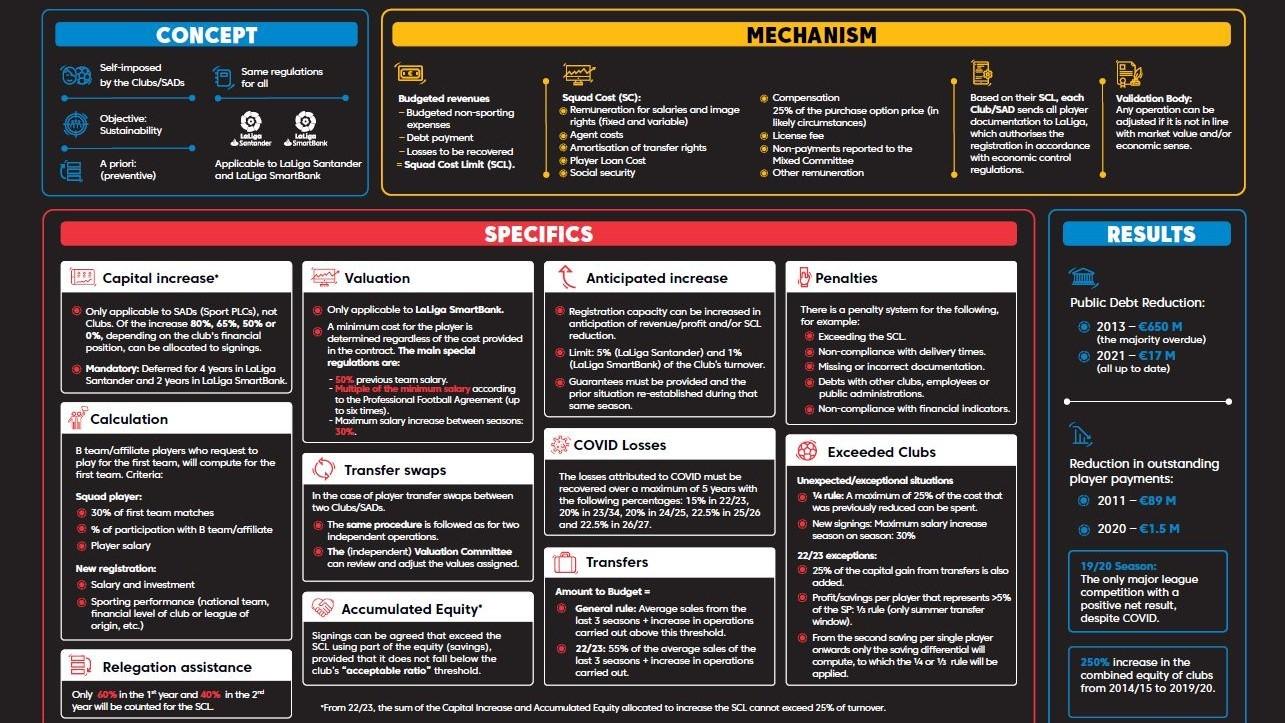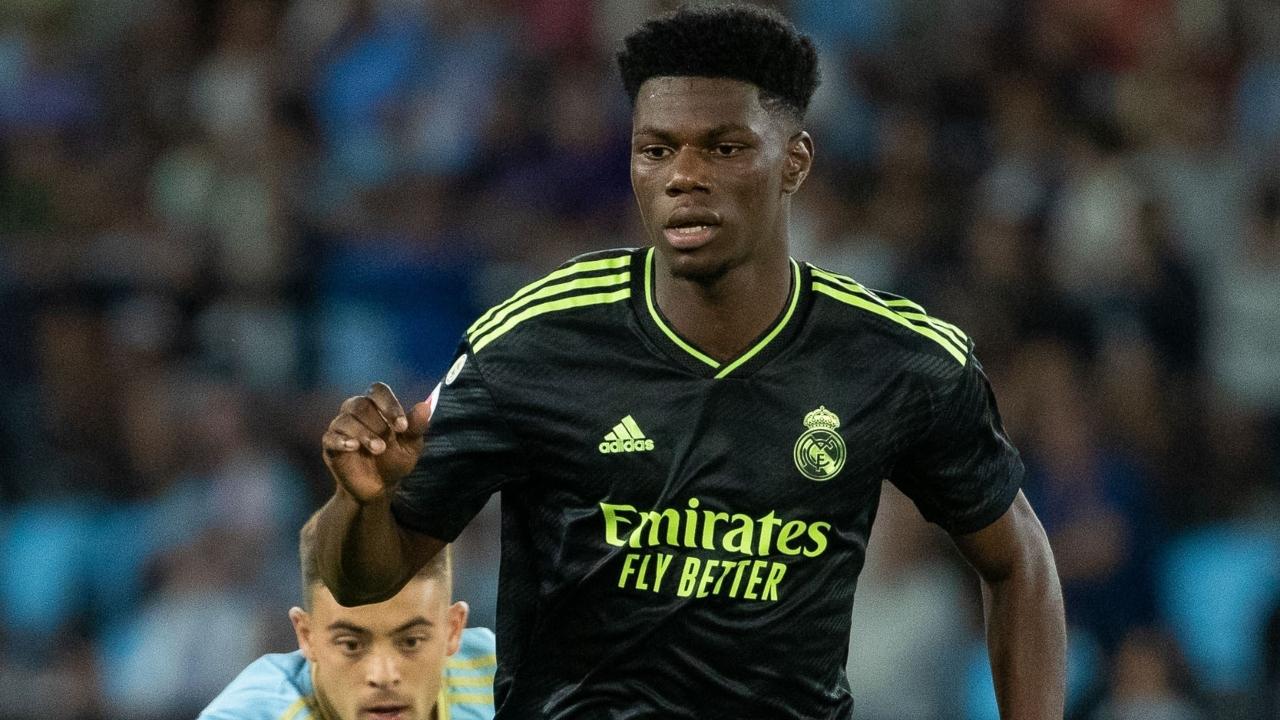Summer is traditionally a time for football transfers. It’s when clubs strengthen and make the necessary adjustments to their squads ahead of a new season and it’s a period of excitement and fresh hope for fanbases. But how does this process work from behind the scenes? To find out, read on

Robert Lewandowski. Pic/ La Liga
Summer is traditionally a time for football transfers. It’s when clubs strengthen and make the necessary adjustments to their squads ahead of a new season and it’s a period of excitement and fresh hope for fanbases. But how does this process work from behind the scenes? What must a club do when signing a player in order to register the new arrival with LaLiga? What is involved in the Economic Control and Squad Cost Limit rules that have been approved in LaLiga? Here comes a look at how the LaLiga transfer market works from within.
Economic Control is a regulatory framework that was self-imposed by the LaLiga clubs and SADs (public limited companies), launched in 2013 with the clear objective of guaranteeing the sustainability of the competition and of the clubs themselves through financial review.
This framework applies in the top tier, which is LaLiga Santander, and in Spain’s second division of LaLiga SmartBank too, so all participating clubs must abide by the same rules. LaLiga’s Economic Control is preventative and coexists alongside retrospective measures such as UEFA’s Financial Fair Play. The clubs know how much they can spend in advance, making it easier to stay within the limits and preventing the creation of unsustainable debt. Looking at the five major European leagues, this measure differentiates LaLiga from the others when it comes to the transfer market.
When making signings, one of the pillars of Economic Control is particularly important, that of the Squad Cost Limit (SCL). This is, in other words, the amount that each club can spend on their squad. It should be noted that the squad is made up of Registrable and Non-Registrable parts. The Registrable squad refers to the players with shirt numbers 1 to 25, the head coach, assistant coach, fitness coach and other coaches with similar roles. However, there are also players who aren’t assigned to a particular squad of the club or some who have already departed but who still account for a cost (such as a compensation). So, the Non-Registrable squad encompasses the other players and coaches at the club.
This framework isn’t only concerned with the salaries of these professionals, but with various other factors too, such as variable payments, image rights payments, agent fees, amortisation of transfer rights, loans costs, social security contributions, compensations, 25% of the purchase option price (when it’s quite likely to be carried out), license fees and other remunerations. As such, any new player a club wishes to register must fit within the club’s SCL.
Looking at all the factors that make up the SCL, the limit for each club corresponds to a simple equation: budgeted non-sporting expenses are subtracted from the budgeted revenues, taking also into account the debt repayments, as well as the losses to be recovered. The remaining sum is the SCL of the club in question.

When a club or SAD signs a new player they send all the documentation to LaLiga, who will authorise or reject the registration of the player, based on the rules and on the SCL at the date of the application. There is a Valuation Body that, using reports from independent experts and following the rules set out in the policy framework, can revise any particular operation, for example, to ensure that a deal is in line with market values and/or economic trends. This guarantees that all registrations of players by LaLiga clubs are in line with Economic Control. Only in this way can it be ensured that all of the teams are competing with the same rules and that there is no form of financial doping. Above all, this ensures the sustainable growth of LaLiga clubs.
The application of Economic Control in LaLiga and the responsibility of the clubs have already produced undoubted benefits. From 2014/15 to 2019/20, the combined equity of clubs rose by 250%. Meanwhile, debt owed to public bodies has gone down from €650m in 2013 (the majority overdue) to just €17m in 2021 (all up to date). Furthermore, complaints from players over non-payment have fallen drastically, from €89m worth in 2011 to €1.5m worth in 2021, with most of the current objections stemming from conflicting interpretations of criteria, rather than unsubstantiated failures to pay.
In the time since the introduction of Economic Control, the positive off-the-pitch results have been accompanied with success on the field of play, as 17 of the past 26 European titles in this time have been won by Spanish sides. All players who ply their trade in LaLiga know that they are in a competition that is very strong in a sporting sense and, at the same time, stable financially. That is a double achievement, one that is even more impressive in the recent times of the Covid-19 crisis.
Which bodies play a role in establishing the SCL?
When a club or SAD sends the documentation for a new player, the managing body of LaLiga’s Economic Control is in charge of authorising the registration request. Furthermore, LaLiga is also responsible for approving the SCL of each club. In order to make these decisions, there are some specialised bodies and tools that act as guarantors of the just compliance with the rules. There is a team of analysts in the Economic Control department at LaLiga, there is a Validation Body and there are technological appliances (software, BI&A, AI, etc). Nothing is left to chance.
This is all done to reassure clubs that the rules are being followed to the letter. To provide further guarantees, there is auditing of data and the compilation of independent expert reports. In the case of any discrepancy, it is possible to go to the Financial Supervision Committee of LaLiga’s Economic Control, to a UEFA Appeals Committee (RFEF – Spanish Federation) or to the ordinary courts.
THE SPECIFICS OF ECONOMIC CONTROL
It’s clear that the common regulatory framework of Economic Control is robust and that it must be met by all LaLiga Santander and LaLiga SmartBank clubs. But, not all clubs are the same. As such, there are some idiosyncrasies based on these different circumstances.
What happens if a club has exceeded its SCL?
Faced with this exceptional situation – one that has managed to arise following Covid-19 and the drastic reduction in revenues – the competition’s Economic Control framework looks to the “1/4” rule. In the case of having exceeded the limit, clubs are allowed to spend no more than 25% of a cost that has been reduced beforehand. With this, a balance is struck between clubs’ financial requirements and on-field needs, guaranteeing that the exceeded amount is gradually reduced until the point of reaching the required financial equilibrium.
An exception during the 2020/21 and 2021/22 summer transfer windows saw two additional points added to this “1/4” rule. Firstly, if a club above the limit achieves a capital gain from a transfer then 25% of that capital gain will be added to the “1/4” calculation. Furthermore, if a saving is made through a player who represents more than 5% of the SCL then a “1/3” (“1/2” in 2020/21 and 2021/22) rule will be applied instead of a “1/4.” In other words, 33% of that saving can be respent.

On the other hand, for new registrations in the case of having exceeded the limit, the player can’t gain a salary that will later be increased by more than 30%. And finally, if a player has already generated a saving under the "1/4" or “1/3” rule, from the second saving onwards, only the differential, i.e. what he generates in savings over and above the first saving, will be taken into account.
How are player swaps calculated?
In the case of a player swap between clubs or SADs, these operations are treated as if they were independent operations and as if one signing has been made by one club and another signing by the other club. There is an (independent) Valuation Committee that, if needed, can review and adjust the values assigned to each transfer by the clubs.
Can clubs turn to accumulated equity for transfers?
As outlined above, the clubs’ combined equity grew by 250% between 2014/15 and 2019/20 thanks to their good management. In exceptional circumstances, be they particular to a single club or across the board, such as the COVID-19 pandemic, it has been asked if clubs can use the money saved from previous years. Economic Control does allow for the SCL to be surpassed through the use of some accumulated equity, provided that it does not fall below the club’s “acceptable ratio” threshold. This, then, is a resource that is only available to clubs that are, financially speaking, stable and that have savings at hand.
Are there sanctions for clubs that don’t meet the Economic Control limits?
Yes. There is a penalty system for, among other issues: exceeding the SCL; non-compliance with delivery times; missing or incorrect documentation; debts with other clubs, employees or public administrations; and non-compliance with financial indicators.
If an SAD approves a capital increase, can that be used to increase the SCL?
Yes. However, the percentage that can be used on signings will vary depending on the financial situation of the club. From the best to the worst financial indicators, they can allocate 80%, 65%, 50% or 0% to signings.
Independently of the permitted percentage, the entire amount cannot be allocated to signings, at least not immediately. LaLiga Santander clubs must defer the amount over four years, while LaLiga SmartBank clubs must do so over two years.
How is an amount for not-yet-completed transfers calculated in order to update the SCL?
The formula for calculating the SCL is based on budgeted revenues, which is an estimation of how much a club expects to bring in. To calculate the SCL at the start of a transfer market, an estimation is made and, to ensure this is as consistent as possible, it is based on a club’s activity from previous years.
For the 2022/23 season, the amount that initially appears in budgets is based on 55% of a club’s average sales over the last 3 seasons, while this amount will increase automatically with each transfer carried out in this window. This is a special rule reflecting the current situation in the transfer market, but under normal circumstances the general rule is: the amount initially appearing in budgets will again be based on 30% of a club’s average sales over the previous 3 seasons and the amount will then be automatically increased with the transfers carried out, but only once this threshold has been reached.
What happens if the documentation presented by a club is found to differ from the reality of the market?

When a club sends the documentation to register a new player, there is a Validation Body that can make adjustments if the figures presented don’t line up with the values of the market or with economic trends.
Are there special rules for salary valuations?
There are special rules applied to all indicated cases and, based on these, a minimum cost for SCL purposes is determined for the player in question, regardless of the cost provided in the contract. The main special regulations in these cases are: if a player comes from one of the top five leagues and played a certain number of matches then at least 50% of the previous salary is considered; it isn’t possible to reduce a salary without adding more years to the contract; and the maximum salary increase between seasons is 30%. For now, this specific part of Economic Control has only been approved for LaLiga SmartBank, except for this last point of the salary increase between seasons, which also applies to LaLiga Santander exceeded clubs.
Do relegation assistance payments count for the SCL?
LaLiga dedicates some economic help to the clubs who are relegated from LaLiga Santander to LaLiga SmartBank, with these relegation assistance payments varying based on certain conditions and precedents that are specific to each club. From this 2022/23 season, only 60% in the first year and the remaining 40% in the second year will be counted for the SCL.
How are the losses attributable to Covid calculated?
The losses attributable to Covid can be recovered over 5 years in the following percentages: 15% in 2022/23, and then successively 20%, 20%, 22.5%, and finally 22.5% in the 2026/27 season.
How is the players in the reserve team involvement calculated?
For players registered in the reserve team (or dependent team) who apply for a visa to participate in the professional competition, they will be counted as a first team player for the purposes of the SCL according to the following criteria:
• in case of players already belonging to the club: if played more than 30% of the first team matches, the percentage of matches played with the reserve team, and the player’s salary.
• in the case of newly registered players: the amount of the transfer and the player’s salary, as well as previous sporting performance (national team, former club and league, etc).
Is it possible to increase enrolment capacity in advance?
There is an option to increase enrolment capacity by anticipating the realisation of revenue or profit. This measure is strictly transitional in nature, with a commitment by the club to restore the prior situation during the same season. To this end, guarantees must be provided in the form of a cash deposit or bank guarantee, which must be provided by the shareholder or a third party outside the club, but never by the club itself. In this sense, in the event that the situation is not restored, the guarantee will be recorded in the Club's balance sheet as non-refundable equity, and LaLiga may apply these guarantees to the payment of the Club's overdue debts. In addition, there is a limited maximum amount that can be used under this rule: 5% of Net Turnover in LaLiga Santander and 1.5% in LaLiga SmartBank.
Within all these specifics of Economic Control, it should also be noted that, from 2022/23, the sum of any capital increase, and accumulated equity allocated to increase the SCL cannot exceed 25% of turnover.
 Subscribe today by clicking the link and stay updated with the latest news!" Click here!
Subscribe today by clicking the link and stay updated with the latest news!" Click here!










